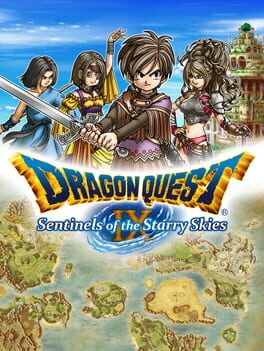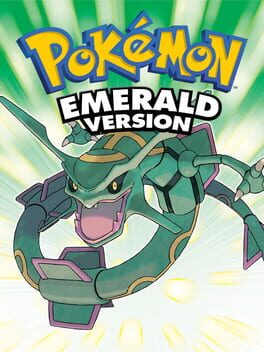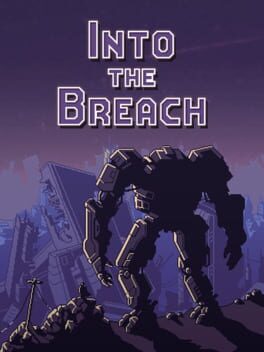animorphology
Bio
my name is tess
my name is tess
Badges

1 Years of Service
Being part of the Backloggd community for 1 year

Early Access
Submitted feedback for a beta feature
005
Total Games Played
000
Played in 2024
000
Games Backloggd
Recently Played See More
Recently Reviewed See More
A friend said recently that she was going through a divorce from Pokémon. Playing any Pokémon game in the 2020s is an exercise in context, either examining its place in the world's most profitable franchise or attempting to analyze it alone. The latter is impossible, but still I am tempted, the same way I am tempted to fall on easy answers why a relationship ended. Maybe it was money, maybe it was youth. Maybe it was me, maybe it was you.
Some things are unambiguous: Pokémon Emerald is an exceptional RPG. Tim Rogers talks in his Kotaku review about the incisive decision tree of only four moves, only three starters, only two games to choose from. This design expertise of its first decade is best displayed in Emerald, where classic RPG elements like the gates of an interconnected world are perfectly placed. You will emerge from a cave onto a familiar sunny beach. Music celebrates a city on a summer day, the world-ending threat of the latter half is moving for the first and last time, and the battle system comes into its own. Any substantial complaint is outweighed by Emerald's capacity for adventure. When I was seven, I asked for a Mudkip for Christmas. The player is prioritized without being condescended to. This formula succeeds so foundationally that in later years the Pokémon brand will escape the RPG label entirely, becoming a cultural staple of childhood even outside of the video games.
In a recent interview, Xbox Game Studios chief Matt Booty said that large games take half a decade or more to complete. This is evident across studios, with Dragon Quest or Mario or Elder Scrolls taking upwards of 6 years to produce. Each mainline generation of Pokémon since 1996 has released 3–4 years after the last. The issues with this development cycle are clearest in Scarlet/Violet, where working assets were left in the shipped version, performance problems were constant, and core design problems like the order of gyms were left unsolved. I think no one, not even those knowledgable about its development, could comprehensively describe the reasons for Pokémon's failures in the last decade. But anyone who has had a job can make conjectures about the work environment: executive level demands are often out of touch with the realities of day-to-day work, especially on creative projects. Something on the order of 80% of Pokémon's profits are in merchandising, and a fraction of the rest is in mainline video game sales. This is not a single problem with a single solution, but a compounding shift in priorities from the top down away from Pokémon, the video game franchise, and towards Pokémon, the seventy billion dollar brand. It has now escaped the RPG label and become a cultural staple of childhood. More importantly, it is a highly profitable one.
Of course, this is speculation. Decrying the decline of beloved franchise and yearning for the nostalgic past is a tired, toxic game. Sometimes I wonder if I am owed anything by an intellectual property; sometimes it seems I would be better off if I weren't. Capitalism will kill your darlings if you don't do it first. But Pokémon, like much children's media, is in the business of being your darling. A creator chooses whether to accept that responsibility, however parasocial it may be. I won't argue. But Emerald's excellence drives me to read these interviews, look up these numbers, searching for a reason why things fell apart, even if it's wrong. When the answer inevitably remains unknowable, I am tempted to isolate Emerald from everything since and tell you it is an exceptional game, the same way I tell someone I am leaving that I love them still.
Some things are unambiguous: Pokémon Emerald is an exceptional RPG. Tim Rogers talks in his Kotaku review about the incisive decision tree of only four moves, only three starters, only two games to choose from. This design expertise of its first decade is best displayed in Emerald, where classic RPG elements like the gates of an interconnected world are perfectly placed. You will emerge from a cave onto a familiar sunny beach. Music celebrates a city on a summer day, the world-ending threat of the latter half is moving for the first and last time, and the battle system comes into its own. Any substantial complaint is outweighed by Emerald's capacity for adventure. When I was seven, I asked for a Mudkip for Christmas. The player is prioritized without being condescended to. This formula succeeds so foundationally that in later years the Pokémon brand will escape the RPG label entirely, becoming a cultural staple of childhood even outside of the video games.
In a recent interview, Xbox Game Studios chief Matt Booty said that large games take half a decade or more to complete. This is evident across studios, with Dragon Quest or Mario or Elder Scrolls taking upwards of 6 years to produce. Each mainline generation of Pokémon since 1996 has released 3–4 years after the last. The issues with this development cycle are clearest in Scarlet/Violet, where working assets were left in the shipped version, performance problems were constant, and core design problems like the order of gyms were left unsolved. I think no one, not even those knowledgable about its development, could comprehensively describe the reasons for Pokémon's failures in the last decade. But anyone who has had a job can make conjectures about the work environment: executive level demands are often out of touch with the realities of day-to-day work, especially on creative projects. Something on the order of 80% of Pokémon's profits are in merchandising, and a fraction of the rest is in mainline video game sales. This is not a single problem with a single solution, but a compounding shift in priorities from the top down away from Pokémon, the video game franchise, and towards Pokémon, the seventy billion dollar brand. It has now escaped the RPG label and become a cultural staple of childhood. More importantly, it is a highly profitable one.
Of course, this is speculation. Decrying the decline of beloved franchise and yearning for the nostalgic past is a tired, toxic game. Sometimes I wonder if I am owed anything by an intellectual property; sometimes it seems I would be better off if I weren't. Capitalism will kill your darlings if you don't do it first. But Pokémon, like much children's media, is in the business of being your darling. A creator chooses whether to accept that responsibility, however parasocial it may be. I won't argue. But Emerald's excellence drives me to read these interviews, look up these numbers, searching for a reason why things fell apart, even if it's wrong. When the answer inevitably remains unknowable, I am tempted to isolate Emerald from everything since and tell you it is an exceptional game, the same way I tell someone I am leaving that I love them still.
Flaws in tactics games are uniquely frustrating, as doomed combats tick towards an hour or mechanical layers are obfuscated in menus. A sleek, punchy SRPG is a pipe dream. Into the Breach is the only game to achieve this. It compares more easily to Chess than to its contemporaries, combats more like puzzles where you can Queen's Gambit your mechs on the ceiling. There is always a solution, if you think hard enough. This is an astonishing feat of balance. In their GDC talk, a developer describes how they reworked the story layer repeatedly before stripping it out almost entirely. A game that understands itself this deeply is the result of creativity tempered to be unbreakable. That design is the heartbeat of Into the Breach, on high and low levels, the looping turns inside combats inside campaigns. It could beat forever.



